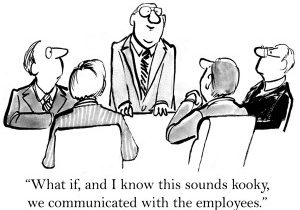Business owners and key executives create their company culture – and that culture drives their organisation’s results. If you are a leader who is not getting the results you want, it’s important to make an honest evaluation of your communications skills.
Some cultures are created by default, passively letting people act autonomously based upon their individual preferences. The leaders are either unaware of what they are creating, aware but in denial, or aware but lost as to what they should be doing differently. You might say they are leaders in name (or title) only. If you are observing any of these symptoms in your company, there’s a good chance it is suffering from a leadership vacuum:
- Lack of accountability
- Low employee engagement
- Acceptance of poor performance
In contrast, effective leaders strive to actively create their organisation’s culture and drive positive action by actively influencing their staff. To provide some perspective on what this can look like, here are some comments on leadership worth considering:
“Management is doing things right; leadership is doing the right things.” Peter Drucker
“A genuine leader is not a searcher for consensus but a molder of consensus.” Martin Luther King
“Leadership is unlocking people’s potential to become better.” Bill Bradley
So, let’s say you want to become better at doing the right things, molding consensus within your team and unlocking the potential within others. Where would you invest your time? Assuming your people are not mind readers, we’d like to propose that you start by assessing and improving your own communications skills.
Leaders get things done by clearly communicating their expectations and providing consistent, motivating feedback. But most of us have not been trained to be effective communicators. So where can you start?
Here are four tips to get you started on a positive track toward improving your effectiveness when requesting action from your people:
– Verify you have their undivided attention by observing their eye contact and other non-verbal signals. This will improve the odds that they hear your complete request.
– Start with a preface, to provide them your perspective. Explain why the action is needed and share helpful background information.
– Share a clear description of the action desired, to eliminate guesswork. Ask if they understand exactly what you want them to do.
– Specify the completion date and time that is required, so you both know this requirement and a complete commitment is established.
There’s a lot more to learn about communicating effectively, but keeping these four tips in mind can help you make major strides in the right direction. Try them out and let us know how you get on!
– Verify you have their undivided attention by observing their eye contact and other non-verbal signals. This will improve the odds that they hear your complete request.
